In this article:
Hickeys are essentially bruises that occur when tiny blood vessels called capillaries located right under the skin are damaged or rupture due to suction or biting. The blood that leaks from the broken capillaries collects in the surrounding tissue and appears as reddish-purple spots on the surface.
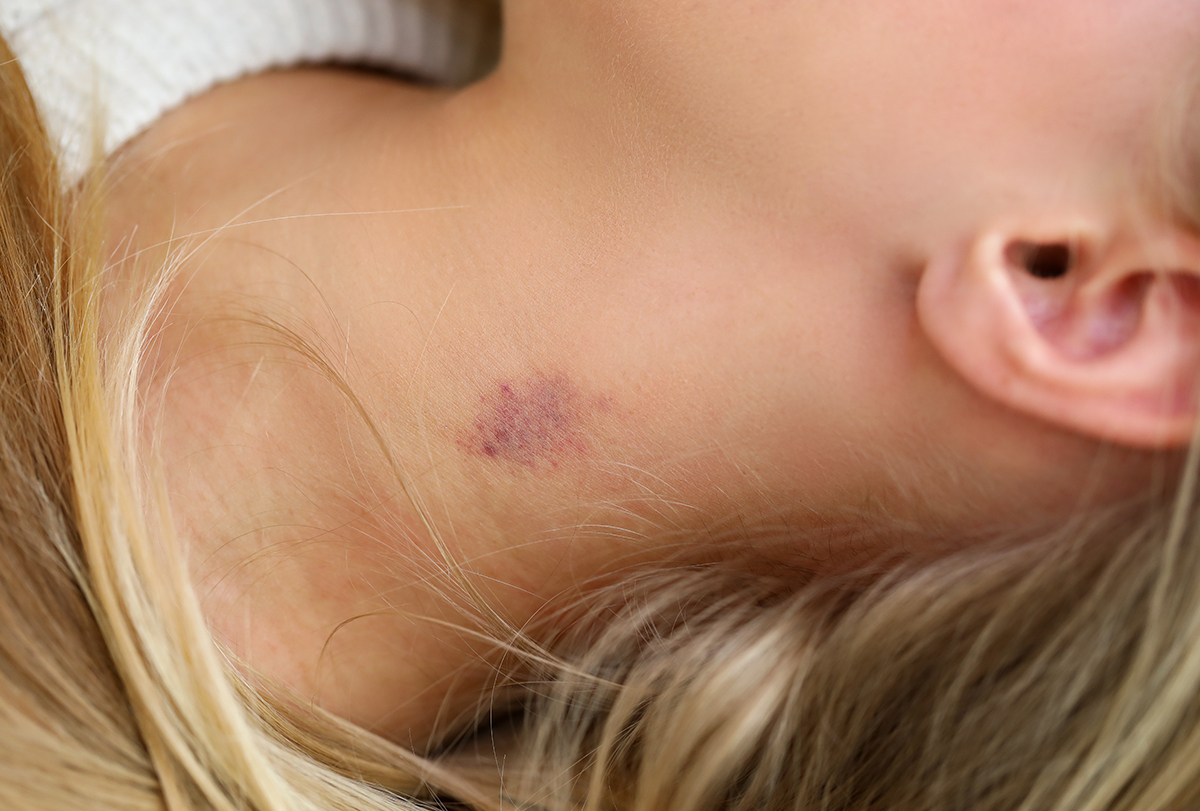
This type of bruising is completely harmless but may cause slight stinging or tenderness upon touching.
Just like any other bruise, a hickey may take a while to heal completely. However, certain remedies may help lighten it quicker and make it hurt less.
Note: Give a hickey time to heal. Like any other bruise, it will heal slowly on its own without aggressive treatments.
Home Remedies to Get Rid of a Hickey
Here are a few simple remedies that can help you get rid of a hickey faster:
1. Apply a cold compress
Cold compresses are a great way to soothe any painful bruise, including hickeys. (1)(2)
The application of freezing temperature helps desensitize the underlying nerve endings so that you feel less pain. It does so by restricting blood flow to the targeted area, which has a numbing effect and relieves inflammation and redness. (3)
Gentle massages with a cold compress may help decrease coagulation by moving the blood cells away from the affected area.
How to use:
- Wrap 2–3 ice cubes in a piece of cloth or tissue paper.
- Gently massage your hickey with this ice pack for 10–15 minutes.
- Repeat this procedure multiple times a day for best results.
2. Apply a warm compress
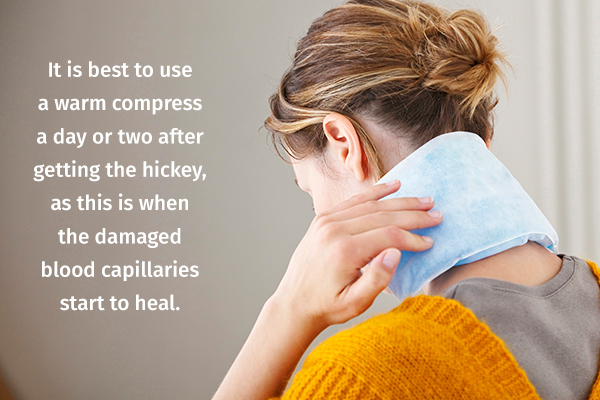
Applying heat to a bruise increases blood circulation under the skin. This helps disperse the leaked blood cells collected in the area, fading the bruising and redness.
It is best to use a warm compress a day or two after getting the hickey, as this is when the damaged blood capillaries start to heal.
How to use:
- Soak a towel in medium-hot water and apply it to the hickey for 10–15 minutes. You can also use a hot water bottle for this purpose.
- Remove the towel for a few minutes, and then repeat the application.
- Make sure that the water is not too hot or boiling to prevent accidental burns.
Note: Cold compresses should be used in the early stages of developing the bruise to prevent it from spreading. Warm compresses should be used at least one day later to help the bruise heal.
3. Try using aloe vera
Aloe vera contains antioxidants and anti-inflammatory compounds that can help reduce redness and inflammation. Aloe vera gel can calm the skin and decrease any pain or swelling on your hickey. (4)
Hence, the topical application of aloe vera may help heal hickeys or bruises.
How to use:
- Squeeze fresh aloe vera gel from aloe vera leaves or use a store-bought one.
- Freeze the aloe vera gel for 1–2 hours.
- Apply the frozen gel to your hickey for 10–15 minutes at a time.
- Repeat at least twice a day for quick results.
4. Massage the affected area
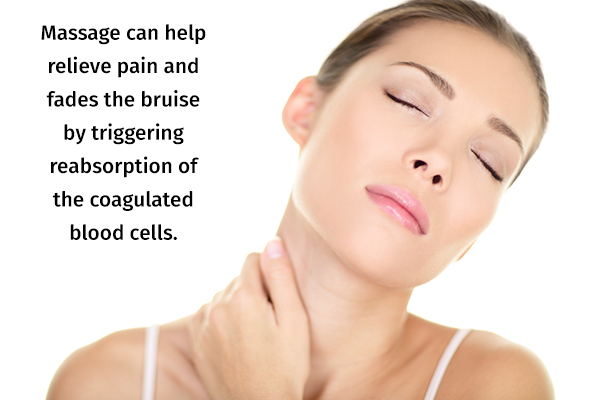
Massaging a hickey can stimulate blood flow to the area. This helps relieve pain and fades the bruise by triggering reabsorption of the coagulated blood cells.
Massage the area with some warm olive oil or coconut oil for maximum benefit. (5)
How to use:
- Warm the hickey by applying a heating pad or warm cloth to it.
- Massage the area using two fingers from the inside of the hickey to the edges.
- This helps disperse coagulated blood cells to the tissues.
- Repeat several times a day for best results.
5. Vitamin K cream and Thrombophob Gel
Vitamin K is an anticoagulant that prevents blood clots. (6) It helps in the absorption of leaked blood cells by the body tissues. (7)
Thrombophob Gel is a topical medication containing heparin. It can help treat bruises and dissolve blood clots. Thrombophob Gel can be applied to a hickey to fade it faster.
How to use:
Apply the Vitamin K cream or Thrombophob Gel at least twice a day to the affected area.
6. Vitamin C
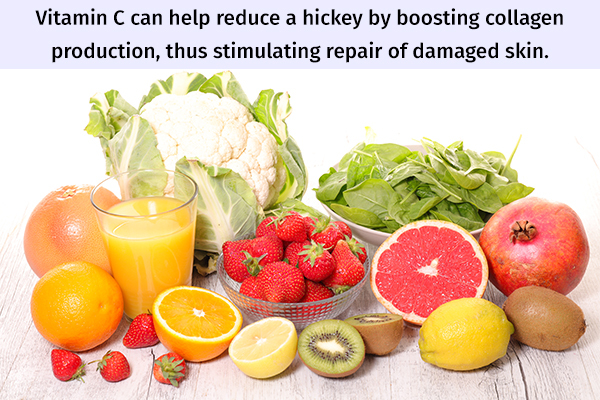
Vitamin C can help reduce a hickey by boosting collagen production, thus stimulating repair of damaged skin. (8) Collagen is a protein found in skin cells that helps keep the skin tight and fresh. (9)
How to use:
- Consume a diet rich in vitamin C. Some foods that contain high levels of this vitamin are oranges, tomatoes, kiwis, and strawberries.
- Vitamin C-enriched creams can be used topically on bruises to encourage healing.
- Take a vitamin C supplement orally.
7. Rubbing coin or spoon
This one is pretty self-explanatory. Cold coins or spoons can work as a cold compress for your skin. (10)
How to use:
- Place a coin or spoon in the freezer for 10–15 minutes until it turns cold.
- Gently press the bruise with the cold metal to soothe it.
- Make sure not to press too hard to avoid irritating the hickey.
8. Use cinnamon oil
Cinnamon oil contains antioxidants and anti-inflammatory compounds that can help heal a bruise. It also improves blood circulation to the area when applied topically. (11)
How to use:
- Apply 5 drops of cinnamon oil to the area.
- Gently massage it in circular motions.
9. Try using green tea
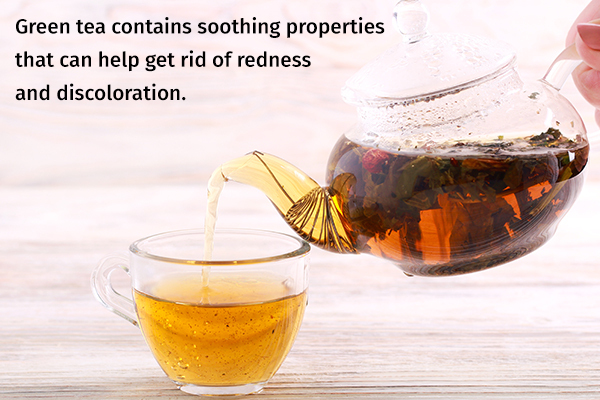
Green tea helps reduce inflammation and swelling. (12) It also contains soothing properties that can help get rid of redness and discoloration.
How to use:
- Place a warm or cold tea bag on the affected area for 10 minutes.
- Repeat at least twice a day for best results.
10. Arnica essential oil
Arnica is an herb that is widely used in homeopathic treatments for treating wounds and bruises. Arnica helps heal hickeys by stimulating blood flow to the area, dispersing coagulated blood cells, and decreasing inflammation. (13)
How to use:
- Add a few drops of arnica oil to 1 teaspoon of coconut oil/olive oil.
- Massage this oil mixture gently over the affected area to heal the hickey.
Disclaimer: Always dilute arnica oil with a carrier oil before applying it to the skin.
Ways to Hide a Hickey
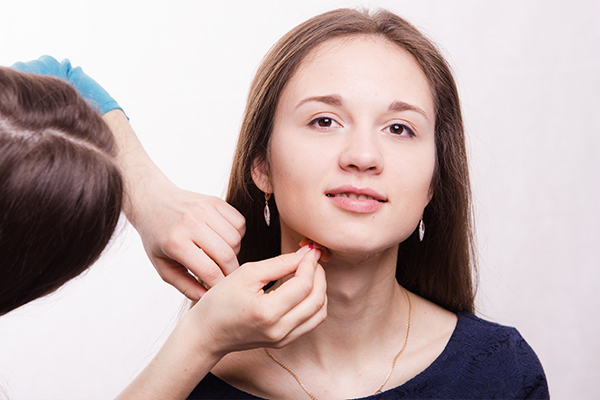
A hickey will take some time to disappear completely, but here are some quick makeup tricks to camouflage the bruising while it heals:
- Apply a concealer over the hickey to blend it with the rest of your skin tone. Always select a concealer that is a shade lighter than your foundation for effective blending.
- Apply a green color corrector over the redness to conceal it.
- Use a skin foundation that is a shade or two lighter than your actual skin tone to hide discoloration.
- Cover the area with fabric by wearing scarves or turtlenecks.
How Long Does a Hickey Last?
A hickey generally heals within a week or two. In rare cases, it may persist for almost a month. If you suffer from any condition that delays healing (such as diabetes or autoimmune disorders), your hickeys may last longer than normal.
Final Word
Hickeys can be embarrassing, to say the least. However, they are very common and usually do not cause further harm.
Let the bruise heal naturally and you should be good to go in a week. You can try any of the remedies given above to increase the rate of healing. Avoid poking, scraping, or touching your hickeys aggressively as that only makes them worse.
- Was this article helpful?
- YES, THANKS!NOT REALLY


